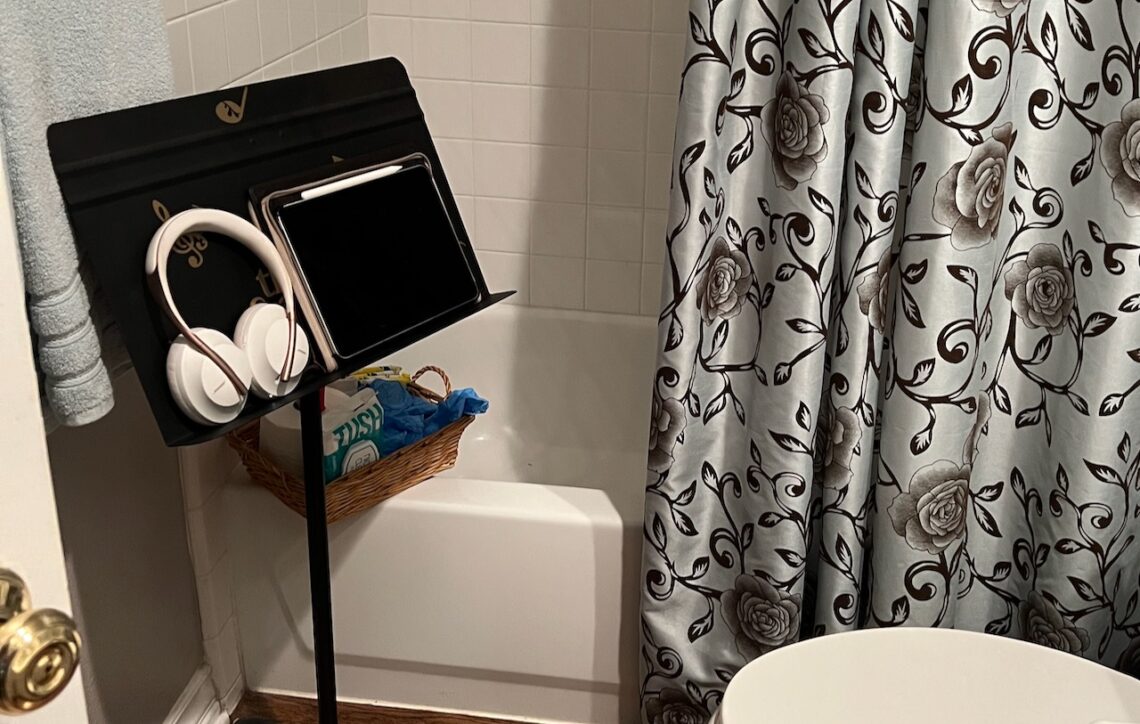
Colonoscopy Prep: What is it like and how to get through it as comfortably as possible
In 2022, I turned 45, which meant it was time to talk to my primary care doctor about my first colonoscopy. In 2021, the recommended age for colorectal cancer screening dropped to age 45 here in the United States. I have a family history of colon cancer and a personal history of IBS (irritable bowel syndrome), so I knew this wasn’t a screening to skip. But it was one I was dreading! I made it through, and along the way, I learned how to deal with the preparation as comfortably as possible. I also learned that I shouldn’t use too much toilet paper (more on that at the end).
One of the best things about a colonoscopy is that you don’t have to be awake for the procedure! Throughout my prep days, I kept reminding myself that all I had to do was get to the appointment, and I was set!
I was dreading the preparation, especially since so many people told me it was awful, disgusting, horrible, and a pain in the butt (literally). There were many times I wanted to ignore this recommendation to get the screening done, but then I would have to write a different post to you about why it is okay to skip your recommended screenings. That doesn’t align with my early detection perspective, so I decided to go through with it, ask for help along the way, and tweet my progress!
In this post, I’m going to share with you about the preparation process for the colonoscopy. I’ll write another post about the actual procedure in the future and link it here for you. I hope this post can help you prepare for your colonoscopy and answer any questions you might have as you face a new procedure.
Important Note: I am not a medical professional. Please take any medical questions you have to your care team. For more information, please see my disclaimer. All information on the page should be considered general advice only.
Getting Your Appointment
In spring 2022, I had my annual physical with my primary care physician. Since I was aware of the drop in age from 50 to 45 for colorectal cancer screening, I decided to ask her about getting a referral for the procedure.
She was able to write me a referral and get the scheduling process going. She recommended waiting until a little closer to my birthday to get the procedure scheduled so we wouldn’t run into issues with the insurance declining the colonoscopy because I wasn’t yet 45.
I called in mid-summer and ended up choosing an appointment for early November. This would be before the holidays and before my deductible reset for the following year.
Colonoscopies are covered as preventative screening tests with most insurances, but if any polyps are found and removed during the procedure, you may see a bill for these diagnostic and pathology services. This varies depending on your insurance, so I recommend reaching out to your insurance provider directly and asking about how the costs will break down for you. Additionally, colonoscopies are done under IV anesthesia, but sometimes that will be charged to you separately from the procedure.
Here are a few things to think about as you schedule your colonoscopy.
Appointment tIming: I chose an appointment first thing in the morning, but if I were to do it again, I might choose a different time. For my preparation, I needed to take the second dose of my medication 6-8 hours before the procedure. This meant I was up late the night before finishing my pooping.
Day of the Week: As you are thinking about what day of the week to schedule your procedure, think about the day before as a part of your procedure. You will likely be on a clear liquid diet the day before your colonoscopy. Also, you will begin taking your preparation medication in the afternoon, so you won’t want to be far from the bathroom once you start drinking it.
Planning for your Colonoscopy
Once you have your appointment, there will be some initial things to do to prepare for getting your colonoscopy. Take some time to get these things done now, so you can head into the procedure as calmly as possible.
Pick up your Prep: Once you make your appointment, the office will likely call in the prescription for your colonoscopy prep. Go ahead and pick it up, even if your appointment isn’t for a few months. The dry preparation will keep for a while.
Ask about the prep options: There are many different types of colonoscopy preps. Some of them involve drinking a high volume of liquid- like mine. Others are known as low-volume preps. I didn’t know the difference between the two, so I didn’t ask many questions. Since then, I realized I could have asked for a different prep if I wanted less liquid to drink. My husband was prescribed something different, which looks lower volume than mine.
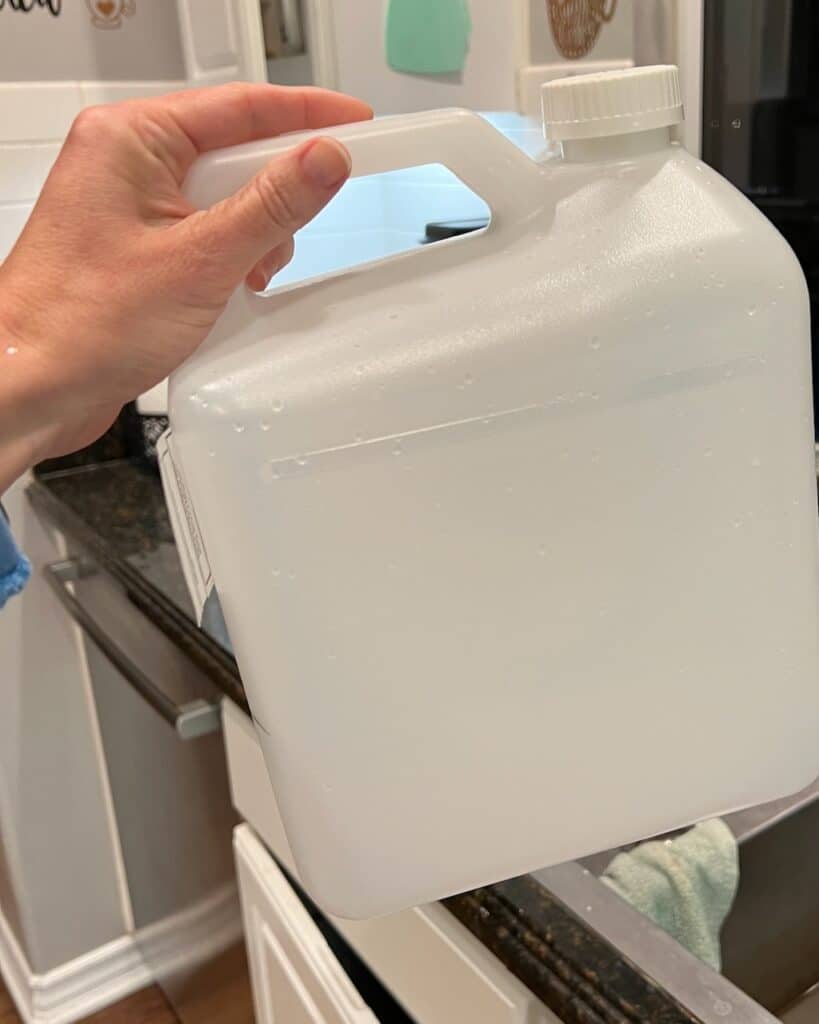
Review your preparation instructions: I was sent a packet of information from the GI office once my procedure was scheduled. This included a video to watch (I’ll be honest, I skipped that) and also instructions on what to do on specific days before the procedure. I was surprised to learn that I was to start a low-residue diet three days before my colonoscopy. Your instructions might be different from mine, so make sure to follow your doctor’s advice.
Calendar your instructions: If you need to change your diet, or do things at specific times, put this on the calendar now. That way, you won’t forget about them as you get closer to your colonoscopy.
Ask for time off: It’s a good idea to ask for two days off for this procedure if you can. I recommend taking the day off before your colonoscopy. You will likely be on a clear liquid diet that day and beginning the prep medication that day. In addition, take the day of the procedure off. You’ll want to relax and recover for the rest of the day. I felt fine the day after the colonoscopy, so I could return to my normally scheduled activities.
Plan your ride home: you will need transportation home from your colonoscopy if you will be having the procedure done under anesthesia. My doctor’s office required my driver’s name and phone number and wouldn’t begin the procedure without that information. They called Dave when I was finished and ready to be picked up.
Schedule Covid Test (if required): I was required to have a Covid test done two days before the procedure. I recommend getting this scheduled as far away from your preparation time as possible, so you have the results before you begin drinking your prep medication. You don’t want to be prepping and get a positive covid test back.
Understand your insurance coverage and verify the in-network status: Ideally, you would do this as you’re making your appointment, but definitely do this before the procedure. You might consider checking with your insurance company to see what portion of the procedure you will be responsible for if they discover and remove a poly during the colonoscopy. As is the case in mammograms, the screening procedures are typically covered at 100%, but if something is found, the insurance coding may change to a diagnostic procedure. This may mean a change to your out-of-pocket expenses. Some insurance companies might require you to pay for the anesthesia out of pocket but cover the colonoscopy at 100%. It depends on your policy. We had already hit our out-of-pocket max for the year (thanks to my lumpectomy over the summer), so we weren’t responsible for any of the fees for the procedure.
Meal Planning: Low-Residue and Clear Liquid
My doctor’s office had me follow a low-residue diet for three days before my colonoscopy. The day before the procedure, I was to have only clear liquids. I was pretty frustrated about these requirements, but I didn’t want to have an incomplete prep and have to do the entire thing over again.
What is a low-residue diet?
Before I began this colonoscopy prep, I didn’t know what a low-residue diet was. So, I took to Twitter and asked about it. Everyone who responded told me it made the actual prep easier. Ok, well, that sounded good. I like easier things.
A low-residue diet is a low-fiber diet. Fiber is what “bulks up” our stools, so by eating less fiber a few days before the colonoscopy, we have less to poop out. Depending on your doctor, you may be asked to follow a low-residue diet for three days before your colonoscopy or perhaps for only one day. Make sure to follow the instructions you receive so you can have a complete bowel prep before your colonoscopy.
Here are some of the basics of a low-residue diet:
Avoid:
- High-fiber foods such as oatmeal
- Nuts, seeds, legumes
- Whole grains
- Leafy greens and salads
- Garlic
- Broccoli
- Corn
- Dried fruit
- Fried foods
- Meats with gristle
- Alcohol
- Chocolate
- Fruit with seeds
- Popcorn
- Limit dairy
- Highly spiced foods
- Beans and legumes
- Mustard
- Hummus
Enjoy:
- White bread, English muffins, plain bagels, and refined pasta
- Cream of wheat or grits
- Smooth sauces or dressings
- Cooked or canned vegetables without seeds
- Cheese (limit)
- Lean meats or fish, not fried
- Eggs- not fried
- Bananas, peaches, pumpkin, apricots – don’t eat the peels
- Applesauce
- Soft potatoes (not fried) without skin
- Avocados
- White rice
- Rice noodles, ramen
- Saltines
- Puffed rice
- Smooth nut butter
- Broth
- Tofu
- Butter
- Frozen desserts without chocolate or nuts
I was overwhelmed when I first read all the rules of the low-residue diet. I eat many high-fiber foods and needed to drastically change what I was eating. Once I got over my frustration, I decided to look through the list and determine what appealed to me.
Here is what I did:
Breakfast:
- English muffin/ bagel with smooth peanut butter
- Coffee
- A small glass of apple juice
Lunch options:
- Turkey and cheese sandwich on sourdough bread with avocado mash spread
- Chicken noodle soup
- Applesauce
- Water
Snack options:
- Saltine crackers and cheese or avocado spread
- Applesauce
- Toast with butter or peanut butter
- Plain greek yogurt with honey
Dinner:
- Broiled Salmon
- White rice
- Asparagus
Dessert:
- Vanilla ice cream
I ended up eating the same meal for dinner two days in a row because I had leftovers, making it easy for me.
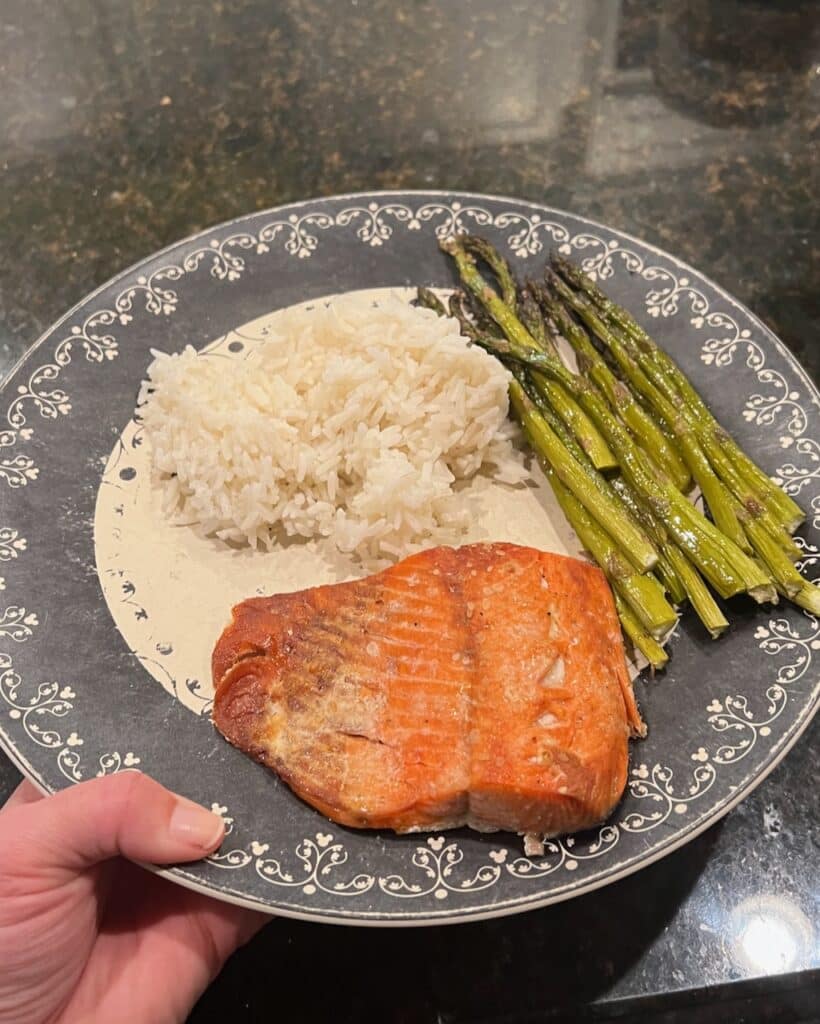
I thought I would hate eating the low-residue diet, but because I chose foods I enjoy, it went much smoother than I thought it would. I did notice my bowel movements slowed down right away once I started eating this way. I was concerned this would make the prep worse for me, but it didn’t. I’ll share more about that later in this post.
Clear Liquid Diet
The day before your procedure, I was told to follow a clear liquid diet. This meant the only things I could eat or drink needed to be see-through. I was dreading this part almost as much as I was dreading the preparation, but it went much better than I thought it would.
I went shopping for my clear liquids a few days before my “low residue” diet started so I would have everything I needed in stock. The last thing I wanted to do was not have options!
Here are some of the allowed items on a clear liquid diet: (but make sure you are following your doctor’s instructions). Avoid anything red, blue, or purple because these could impact the visibility during your colonoscopy.
- Coffee without cream (yay)
- Tea
- Light-colored juice without pulp, such as apple, white cranberry, white grape
- Light-colored sports drinks
- Coconut water
- Jello (but not red or blue)
- Popsicles without fruit or cream
- Clear Broth -chicken, vegetable, or beef. Bone broth was okay for my prep, but I strained it first.
- Light colored soda
- Flavored waters
- Sparkling water
- Drink lots of water
The best part of this list is that coffee is a clear liquid. I began my day with some coffee and juice and then drank something anytime I felt slightly hungry.
My doctor’s office wanted me to drink 10-12 glasses of water in addition to the colonoscopy prep liquid to avoid dehydration. I am usually terrible about drinking lots of water, so I put a checklist on my kitchen island to help me keep track of my water.
Tips for getting through the clear liquid day
- Drink something every hour or whenever you are feeling hungry
- Try to sip and savor whatever you are drinking. I found that my taste buds were more sensitive, and I enjoyed my coffee more because it was the only flavor I was having
- Plan for a relaxing day- do not try to work or do your normal activities. The less energy you expend this day, the easier it is to manage the caloric deficit you will be experiencing.
- If you have family who will be eating, try to arrange for them to either eat out, have food delivered, or enjoy leftovers. The last thing you want to do is cook food you can’t eat.
- Keep it low-key with the exercise. I walked the dogs in the morning, but that was it for my movement.
- Pamper yourself with flavors you enjoy. I am not a fan of Jello, so that wasn’t on my list. I also purchased some clear nutritional drinks, and I found them disgusting. So I didn’t finish them. Do not make yourself miserable by drinking flavors you don’t like.
- Ask for help. Don’t try to do all the things on your prep day. You will exhaust yourself.
Preparing the Preparation Medication
About a week before your procedure, look at the preparation instructions on your prescription colonoscopy medication. Ensure you know when to prepare it so you are not scrambling. I recommend putting the info on your calendar, so you don’t forget.
Two days before my procedure, I needed to fill the large jug with lukewarm water and shake it up to mix the powder.
As soon as I added water, I was shocked at how heavy the jug got. I filled mine halfway, shook it up, and added more liquid to fill it. Eventually, I needed to ask my son Dan to shake the jug for me because it was too heavy for me to mix.
Make sure you mix all the powder, so the medication is evenly distributed. You don’t want the last few sips of your prep to be thicker and harder to drink than the others.
Then, put the jug or jars in the fridge, if instructed.
Preparing your Bathroom
If you have access to a private bathroom during preparation, I recommend you get it set up before you start taking the liquid. I wasn’t sure where I would want to sit, so I set up two areas. I prepared my primary bathroom and the main downstairs bathroom. We have quite a few bathrooms, so I had my choice of toilets.
I ended up using the downstairs bathroom for my preparation because it was closest to the kitchen. Drinking my preparation medication took quite a long time, so I needed to have quick access to the bathroom and also the kitchen to drink in between pooping.
Have plenty of toilet paper and entertainment available in the bathroom. I had some books and set up a music stand in the corner of my bathroom for my iPad. I wasn’t sure what I would do to pass the time, but I wanted to be prepared.
I assembled a basket for preparation and put it in each area I considered using. I had some amazing people on Twitter suggest some of these things to me, and while I didn’t use all of them, I’ll list them here for you so you can consider them.
Bathroom Basket:
- extra underwear
- wet wipes
- Gloves
- Extra toilet paper
- Maxi pad to keep my underwear clean from any residue
- Diaper rash cream
- Cleaning wipes for the toilet
- Air freshener
Drinking your Preparation
So you have your bathroom prepared, you’ve been following your diet, and now it is time to get your bowels clean! This is one of the most critical parts of the process, and once this is done, all that is left is to get to your appointment and hopefully sleep through it.
In most cases, you will be drinking your prep in two phases. I drank the first part of my preparation around 3 PM the afternoon before and then drank the rest beginning at about 10 PM.
Before you start- put on pants that are easy and quick to pull off and on. Trust me, you will not want to be dealing with a belt or buttons!
I pulled out my giant jug of liquid and marked the halfway section on the jug with a sharpie. My instructions were to drink 10 ounces at a time, about 10-15 minutes apart. I was encouraged to walk around while drinking. The most walking I ended up doing was from the kitchen to the bathroom and back again. The medication was supposed to begin working in about an hour.
I had been encouraged to chase the preparation liquid with something flavored, such as juice. So I poured myself a glass of apple juice and then poured my first glass of prep medicine. What was I in for?
The first time I chugged it, I was surprised at how salty it was. It was like drinking thick, salty ocean water. That first glass was the worst because I didn’t know what to expect.
Down it went, and I followed it with a sip of apple juice. Then I looked rather dejectedly at the 4-liter jug and realized I had much more to go. I set a timer for 10 minutes and then began walking around- not straying too far from the bathroom.
Once the timer went off, I was back at the sink, drinking another glass, this time a little faster. As I drank it, I thought about how this would help the doctors get as clear of a picture as possible. This was my medicine, and it was my job to do my part in the preparation. Keeping this mindset helped me stay the course and finish the medication, even though my bowels were well emptied pretty early in the process.
About 40 minutes in, I felt the urge to go. I headed to the bathroom and prepared for the worst. The first bowel movement was quick, and in my case, this was the only one with any form. Every subsequent bowel movement was liquid and clear. I think the low-residue diet may have had something to do with this.
I tried reading a book while sitting on the toilet, but I quickly realized that wouldn’t work for me. I ended up putting on my over-ear headphones (I didn’t want to risk an AirPod falling in) and watching TV on my iPad, which was sitting on a music stand.
I needed to get up and head over to the kitchen every 10 minutes to drink the next part of the prep, so it took a while to figure out when I could confidently take a break from pooping and drink the next dose. If it feels like you need to go, don’t hesitate and head to the bathroom!
When I read the instructions on the medication, it said that it might cause mild abdominal cramping. I was worried that it would be the kind of cramping I experienced during episodes of stomach poisoning. I was pleasantly surprised. The cramping was definitely mild and didn’t cause me any pain.
However, I did experience chills as soon as I started going to the bathroom frequently. I ended up putting a heating pad in the center pocket of my hoodie to keep me warm.
It took me about an hour and a half or two to drink the first half of the medication. Each time I shook the jug thoroughly and then chased it with a sip of apple juice. In between that, I kept drinking water to reach the goal of 12 glasses of water during the day.
From the time I began pooping, I think I was on the toilet for a couple of hours. It took about an hour after taking the last dose of my medication before I felt as if I could safely stop and sit on the couch.
The goal of the colonoscopy prep is to end up with liquid “tea-colored” stools. It didn’t take long for the medication to clean my bowels out. In fact, I was clear by about the second or third bowel movement. But I had been instructed to drink the entire jug. So that was what I was going to do.
It was nice to finally get off the toilet after sitting there for hours. I ended up watching a movie with Dan once things settled for me. Other than the chills, which continued for me during the entire preparation, I was pretty comfortable. My bum did get a little raw after a while, so I used the diaper rash cream to give some relief.
At 10, I began the last part of my preparation. If you have an afternoon colonoscopy, you might do this next half in the morning. It took me another couple of hours to get through this next part.
Getting to the end was pretty tough. My thighs hurt from sitting on the toilet, and my bum was pretty raw. But the more I drank, the closer I was to getting to bed and being done with this.
It was past 1 AM when I finally felt safe enough to head to bed. It was a restless night of sleep for me, but my bowels were definitely clear. There was no more poop left to poop.
Important note: Ensure you don’t use too much toilet paper during your preparation. I used so much that we had a massive plumbing problem a few days later! Unfortunately, that wasn’t covered by my medical insurance! I will consider having a small trash can with a plastic bag next to the toilet during my next prep. I will flush the messy toilet paper down the toilet, but the ones with no poop on them, I will put in the trash can, like I did when I was changing diapers for my babies. I would also put the wet wipes in that container as well.
Once you have taken all your medication, make sure you take note of the time you finish and the last time you have a drink. In my case, that was the night before since I was headed to bed for a bit of rest.
Finishing the medication is the last thing you need to do to prepare for the colonoscopy. I will write about the appointment and recovery in a future post because, apparently, I had a lot to say about how to prepare for your colonoscopy.
If you are over 45, it is time for you to begin your colonoscopies. I hope this post has helped you feel confident as you head into the preparation. Make sure to follow all the specific recommendations from your doctor, and always reach out to your medical team for any questions!


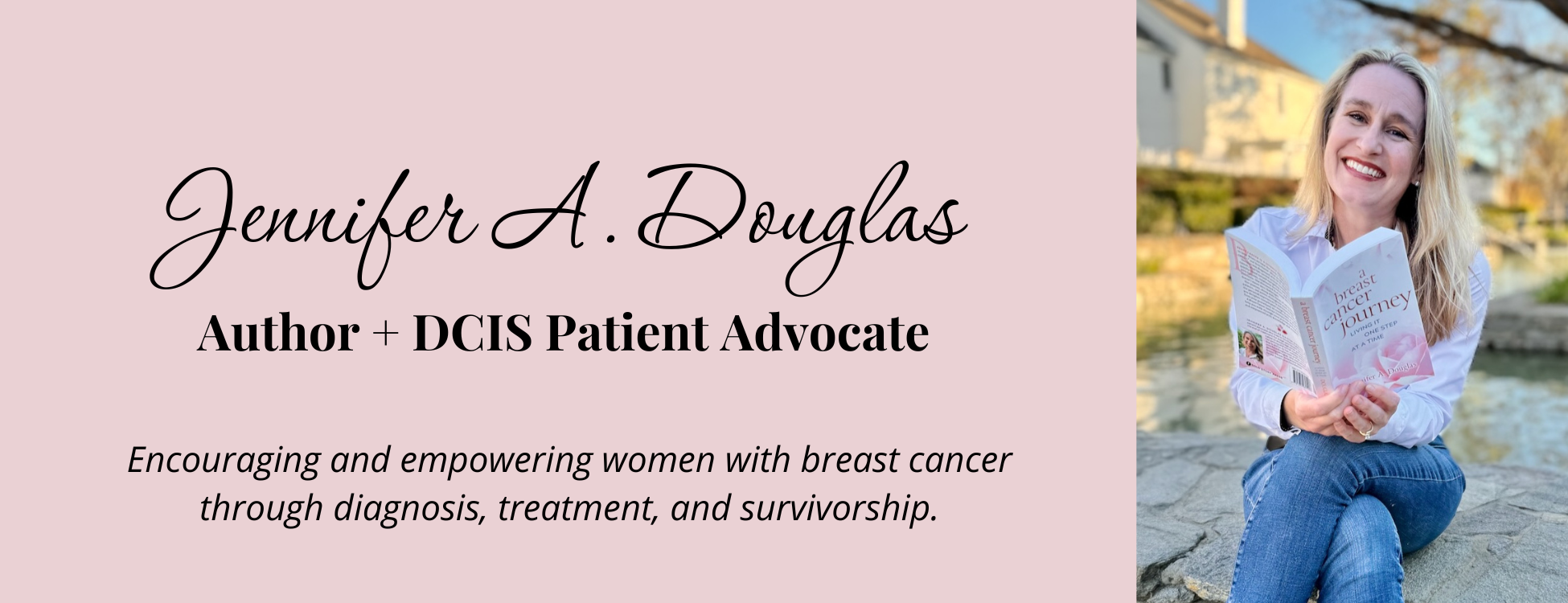
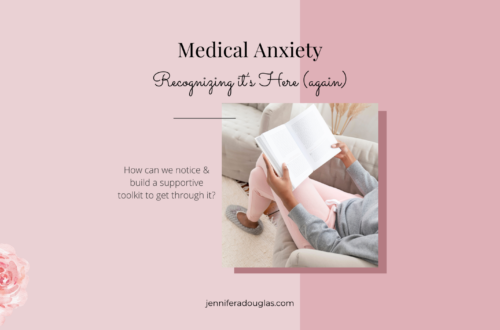


15 Comments
Michelle
Oh, my gosh! Thank you so much for writing this (and with such honesty). I am due for my colonoscopy and have been dreading making my appointment. This helps so much!
Jennifer Douglas
You’re welcome! So glad I could help you as you approach your first one too! Keep me posted on how it goes!
Jennifer L Garris
Thank u so much! Am going to ask for alternative prep. Either pill or dulcolac and clear Gatorade or pedi lite.
Very helpful and w sense of humor!!!👍❤️
Sherell Greer
Hi I just have a question well yesterday was my day of the colonoscopy, I had a conversation with the Doctor who stated I had to re-schedule the colonocopy process because I ate a meal yesterday morning and the night before I had suffered aienal pain and so I am trying to locate a doctor here in Seattle Washington that can give the push method sort of speak it suppose to mean the IV therapy new solution for the colonoscopy prep. I don’t want to do that type of colonoscopy prep again with drinking the 4 liters, I drank that within a two hour period (rapidly) but I made a mistake the following day of the colonoscopy appointment, somehow I thought i was suppose to eat and found when I spoke to the doctor that I wasn’t suppose too and was only suppose to eat at 12pm. the day before. Can you please help me in locating a doctor either in Seattle Washington, I live in Ballard area or, I am willing to travel but hopefully not too far, I searched in the Tucson arizona and Phoenix area, they seem to have it out there, in fact this is where I got the idea of that IV therapy searching on online about the colonoscopy prep.
William Hardy
Very thorough and not too colorful thank you much for the advice it will help me get through some unanswered questions and some thoughts I had I wasn’t sure about thank you so much
Jennifer Douglas
Glad it was helpful! Thanks for the note!
Jennifer Douglas
Hi! I’m sorry you had such difficulty. I’m not able to help you find a doctor, but I do recommend you ask for a low-volume prep the next time you schedule your procedure.
EJ
This was awesome. My appointment is tomorrow. You answered every question I had but could find no where on the internet! May God bless and keep you!
Jennifer Douglas
I’m glad it was helpful! Hope your appointment went well!
Mary Jo insonia
Hello how long do you think I have to sit here the first prep I would like to go walk the dog do I dare take a chance? And thank you for the information
Jennifer Douglas
I don’t recommend leaving the house! When it starts working, it really works.
MaryElizabeth Mengle
Where is your follow up post about appointment and recovery?
Mary Ellen Najar
I think I sat on the toilet for an hour trying to find out how long I might need to sit there and all I found was it all starts in about an hour…but I had no idea how long it might take! Your article was just what I needed! Thank you.
T Jones
Thank you for this very extensive yet, very informative account of your experience. It helped me greatly and better prepared me for my own encounter, even though it was my third. My only addition to your recommendations would be if others were able to employ the use of a bidet. It greatly minimized the potential for clogged plumbing and is mush gentler on personal plumbing as well 😉
Also, if blood pressure is an issue, I highly recommend to drink the 10 to 12 glasses of water. My dehydration lent itself to my blood pressure being very high at the time of the colonoscopy. Other than that, everything came out well, no pun intended. and there were no complications. THE PIPES ARE CLEAR!!
Once again thank you so much!!
Chris Petrey
How Long Does The Prep Stays In